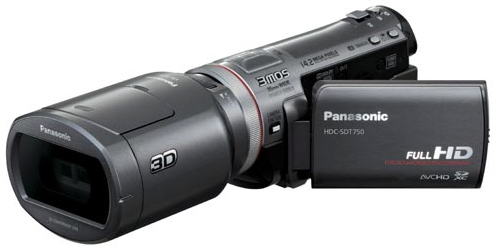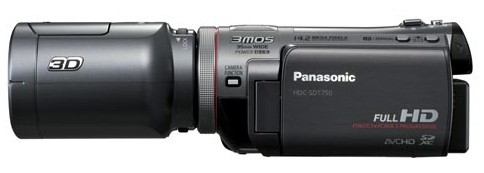Panasonic completes '3D trifecta,' launches consumer camcorder with 3D lens attachment
Today, Panasonic announced its first consumer camcorder capable of capturing both 2D HD and 3D video, the $1,399 SDT750.

Panasonic was one of the most vocal early supporters of 1080p 3D. The Japanese consumer electronics company threw its weight behind James Cameron's Avatar, and commenced work on its 3D Blu-ray authoring center at Panasonic Hollywood Labs in 2008.
This year, Panasonic has completed the veritable trifecta of 3D content. It officially opened that 3D authoring center in February, launched its first Viera 3D home theater solutions in March, and released a tool that lets consumers create 3D videos in July. Amateurs and professionals alike now have a method of delivering their content, and consumers have the means to enjoy it.
The brilliant part about the SDT750 is that it doesn't have to be 3D if the user doesn't want it to be. It can act as a 1080p AVCHD camera on its own, utilizing the "3MOS" sensor system (Panasonic's method of using one CMOS sensor for each color of light in the RGB pallete) for image capture. It includes a 46mm Leica Dicomar lens and a 12x optical zoom function. It can handle the weighty 3D processing, but the bulk of what is the "3D camera" is simply an external lens.
With the included 3D lens attachment, dual 960 x 1080 images are captured side-by-side by the Crystal Engine PRO image processing unit. This content can be saved on SD cards as MPEG-4 AVC/H.264, but the camera also comes with HD Writer AE 2.6T PC editing software, so users can edit their 3D videos and burn onto Blu-ray/DVD.
When the 3D lens is not attached, the SDT750 includes "Panasonic Intelligent Auto" (iA) mode, which automatically selects ideal shooting settings based on the environment. While shooting HD video, iA offers Face Recognition, "Hybrid O.I.S.", AF/AE Tracking, Intelligent Scene Selector, Face Detection and Intelligent Contrast Control.
Hybrid O.I.S. (optical image stabilization) is a new image stabilization feature Panasonic is introducing with this camera. It uses four-axis blur detection to reduce handheld shaking while tracking and zooming.

The Panasonic SDT750 will be available in October 2010, and a full list of specs can be found here.
